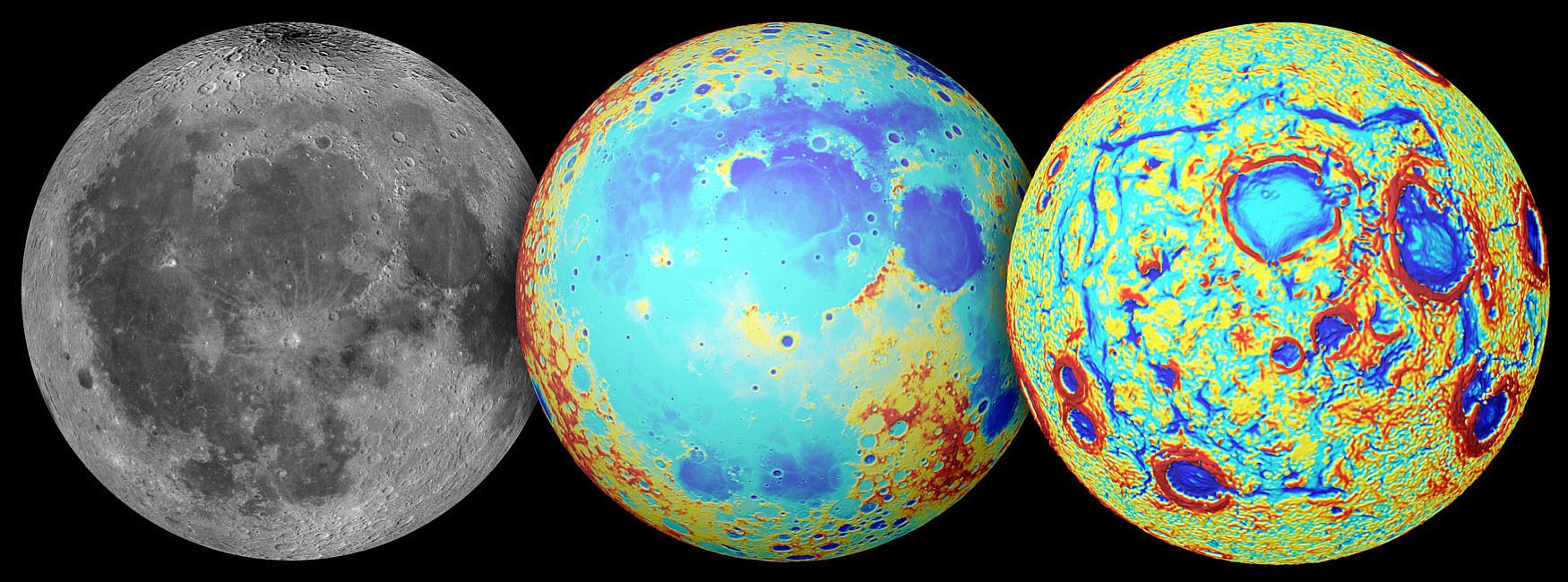The giant basin on the near side of the moon might not be the result of a run-in with a massive asteroid, contrary to what some scientists believed. Instead, this blemish on the lunar surface — nearly as wide across as the United States — could have been formed by ancient magma flows.
The Oceanus Procellarum region of the moon has fascinated humanity from the beginning: The so-called “ocean of storms” forms a cheek of the “man in the moon” (or, in Chinese culture, the hindquarters of the “moon rabbit”). Like other dark spots on the moon (called lunar maria), Oceanus Procellarum was once thought by astronomers to be an actual body of water.
But the moon turned out to contain neither water nor cheese, and a modern theory was formed: These dark spots are the result of dried lava flow. But Oceanus Procellarum, the largest of the moon’s such spots, seemed to exist within a large crater. The prevailing theory was that this sizeable smudge was sitting in an impact crater — one of the scars left by asteroid impacts on the moon.
According to research published Wednesday in Nature, the formation of this lunar geography might not have been quite so smashing. New data suggests that rifts in the moon’s crust formed a sort of magma irrigation system, flooding a lunar valley with lava around 4 billion years ago. When that lava solidified, it formed dark rock that we can see from Earth.
Previous studies were missing vital data, according to study co-author and MIT professor of geophysics and vice president for research Maria Zuber.
When Zuber and her colleagues used data from NASA’s GRAIL mission — two probes that orbited the moon in 2012 — to get images of what was going on beneath the surface of the moon, they found that the “crater” supposedly sitting under Oceanus Procellarum wasn’t the right shape for an asteroid impact.
“It’s remarkably rectangular in shape,” Zuber said, “not circular.” Previous studies had “rounded out the corners” of the valley where data were missing, according to Zuber. “When you have the full picture, it’s clearly a rectangle,” she said.
The angles seen in the edges of this valley are consistent with rift valleys on Earth. Zuber and her colleagues believe that as the moon was cooling in the early days of its development, a rogue plume of magma shot up in this region. Because the lava made this area so much hotter than the mostly-cooled rock around it, the surface cracked and shrank away from the cool surrounding crust.
Eventually, more lava seeped out of this rectangular frame of rifts and filled the valley, forming Oceanus Procellarum.
Zuber and her colleagues aren’t sure how that disruptive magma plume rose to the surface in the first place. “Some will probably still speculate that an asteroid impact heated the surface of the moon and made that plume rise,” she said, but there’s no direct evidence of that.
For now, Zuber said, this study is basic but important. “It’s a question of understanding the evolution of our moon, and trying to understand our place in nature,” she said.
“For anyone who’s ever looked up at the moon and wondered why it has this pattern on its surface — now we have an answer.”



